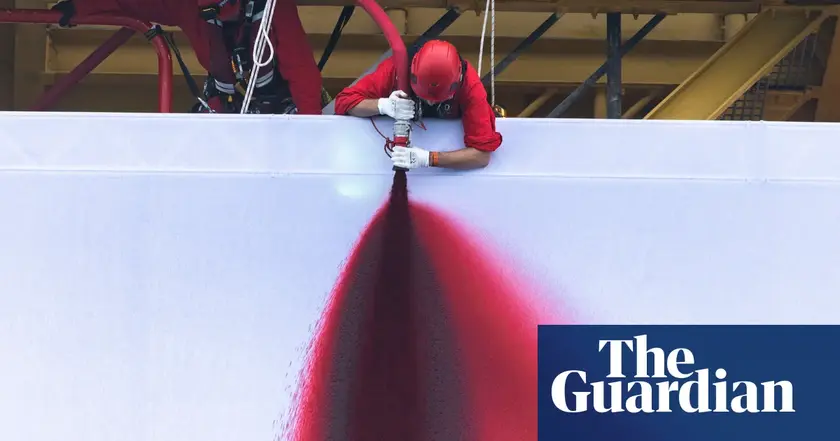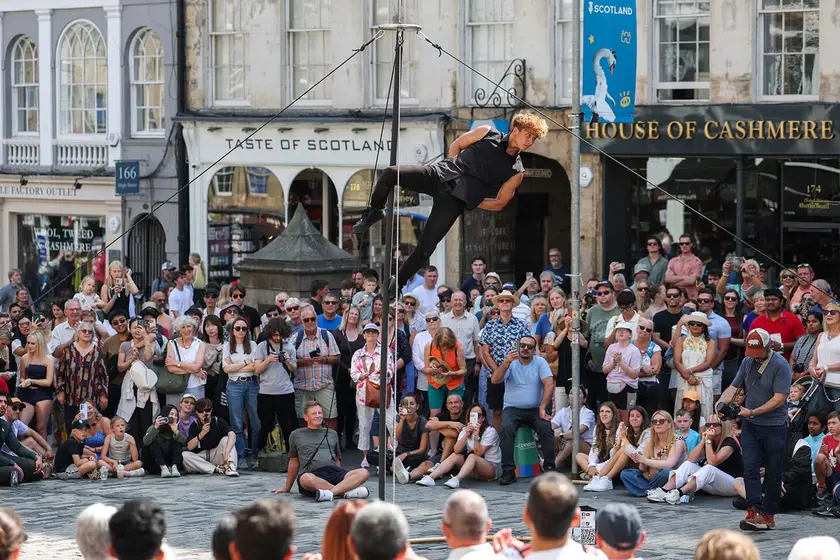T4K3.news
Greenpeace stages blood red art on North Sea rig
Activists scale the Shell Skiff rig in the North Sea, unfurl a large crimson canvas, and spray a non toxic dye as part of an art protest.

Anish Kapoor sculpture installed on a working offshore platform to critique climate harm and fossil fuel extraction.
Greenpeace installs blood red artwork on North Sea gas rig
Greenpeace climbers reached the Shell Skiff gas rig in the North Sea and unfurled a 96 square metre canvas along the side. They sprayed a crimson stain using a high pressure hose. Greenpeace says the stain is blood like and is made from seawater beetroot powder and a non toxic dye. The action took place after activists boarded from the vessel Arctic Sunrise, about 45 nautical miles off the coast of Norfolk, during favorable weather conditions.
Anish Kapoor says the work titled Butchered points to the destruction of the environment and aims to draw public attention to climate breakdown. He notes a pattern of denial around who causes global warming and argues that large oil and gas companies bear major responsibility. Shell UK says safety at sea is the priority and that Greenpeace entered a restricted safety zone without permission. The company adds that the protest involved trespassing and risk to crews and other ships.
Key Takeaways
"There seems to be a collective will to not face the real perpetrators of global warming"
Kapoor on denial of climate drivers
"Our collective global witness to global warming is less than 10 percent of the actual numbers"
Kapoor on attribution of climate change
"Safety at sea is our priority"
Shell UK response to the protest
"This is not vandalism it is a wake up call"
Greenpeace framing of the action
The move blends art and protest in a space usually reserved for industry. By placing a large, visible artwork on a live platform, the action forces a global audience to confront the cost of fossil fuels. The choice of a sea stage adds risk but also a stark contrast between culture and commerce. The tactic highlights a growing trend where public art is used to provoke political and policy discussion, even as it risks legal action and safety scrutiny.
This approach will fuel a broader debate about protest ethics, governance of offshore sites, and the line between art and vandalism. Supporters may praise the creativity and urgency, while critics may see it as unsafe or attention seeking. The outcome could influence how far future offshore actions go in shaping policy and corporate behavior.
Highlights
- Art must disrupt power and demand action
- Public space is a stage for urgent climate truth
- Protest on the sea forces the issue into the open
- Bold art is a loud reminder that inaction has a cost
Offshore protest raises safety and legal concerns
The action involves entry to a restricted zone and use of a high pressure hose on a moving platform. It creates safety risks for crew and protestors and could lead to legal penalties or enforcement action. The event is likely to provoke political debate and public reaction.
The offshore debate over art and accountability is far from over.
Enjoyed this? Let your friends know!
Related News

50 UK breakfasts highlighted

Sea of Galilee red hue explained

Red Arrows fly over region for Cromer Carnival

New menopause cookbook challenges how we eat

Summer arts events scheduled across the UK

Blockbuster finish to window underway

Edinburgh Fringe Strains the City

Warm seas drive surge of flesh-eating Vibrio along coasts
